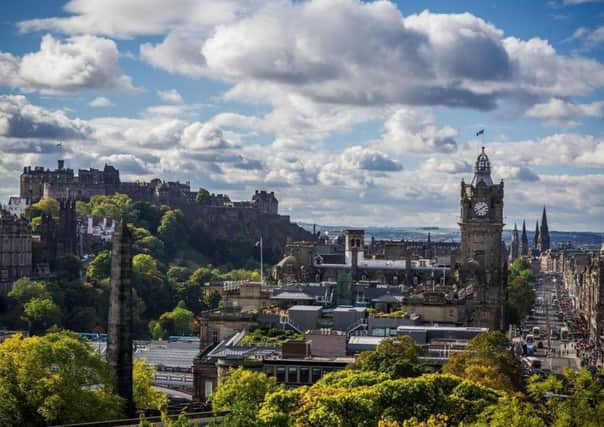Brian Ferguson: Balancing act over ancient and modern faces of Edinburgh


Edinburgh is not short of spectacular locations from which to drink in panoramic views of the city – once you have caught your breath.
But the gatehouse and ramparts of Edinburgh Castle were a fitting location for the launch of a vision which many believe the city has been crying out for. The culmination of a couple of years’ work, the Edinburgh World Heritage Management Plan has the potential to transform much of how the historic heart of the city looks and feels – if it all comes off.
Advertisement
Hide AdAdvertisement
Hide AdIt sets out the wide-ranging concerns that have been raised about the stewardship of the city centre and commits the parties involved to ensuring a better balance is struck in future between maintaining Edinburgh’s economic vibrancy and protecting its natural and built environment, especially bearing in mind that the very reasons for Edinburgh being designated a World Heritage Site are what have made it attractive to investors and developers.
Long-standing issues and concerns are laid bare in the document, drawn together after a lengthy consultation exercise last year. Chief among these are the widely-held views that new developments to emerge in modern times are “out of keeping” with the historic architecture in the Old and New Towns, while there are warnings that the city’s skyline is increasingly “vulnerable to unsympathetic development.”
In response to mounting concerns that Edinburgh’s World Heritage Site status has been put at risk, the city and its heritage partners will now set out exactly what they want for sites that are snapped up well before developers bring forward their own visions – thereby hopefully sparing everyone the bitter and prolonged wrangles of recent years.
The blueprint also contains significant commitments on transparency over when and where major events are staged, complaints about the “over-commercialisation” of public spaces like Princes Street Gardens and St Andrew Square, the domination of short-stay visitor accommodation and the impact of the Airbnb boom, and the concentration and volume of tourists on some streets.
The latter issue is one that has caused much debate and anxiety within the tourism industry in recent months, but also some of the most radical thinking within the council, albeit it behind closed doors so far.
However council leader Adam McVey, who admits there is now “acute pressure” on parts of the city during peak periods, spoke to me at the castle on the city’s new aims to reduce private car use, and maximise the available space in the city centre for cycling and walking, and drawing comparisons with the kind of measures introduced in other European cities.
It emerged at the weekend that the council is seriously concerned about “congested and cluttered” streets, the number of buses using Princes Street, and growing conflict between cyclists and other forms of transport. It has just appointed a leading sustainable transport expert, Daisy Narayanan, to lead a project which will see early ideas put out for consultation in May and possible pilots running in some streets during the Edinburgh Festival.
Advertisement
Hide AdAdvertisement
Hide AdShe wrote recently about a need for the city to “eschew car use” in favour of walking and cycling if it wants to be a desirable place to live and work in future. Turning this laudable notion into a workable vision will be no simple task, but one that should not be beyond a forward-thinking European city with a tried and tested public transport system.
The council has been reluctant, to say the least, to publicise its new ambitions to date, but anyone who has tried to navigate the city centre during major events knows that action to redress the balance is long overdue.
With the onus now on councillors to live to the promises of protection for the World Heritage Site, they should get moving with building public support for a compelling case for change.